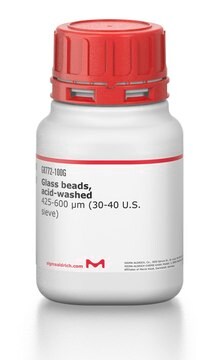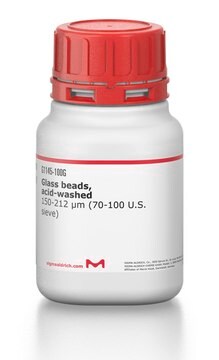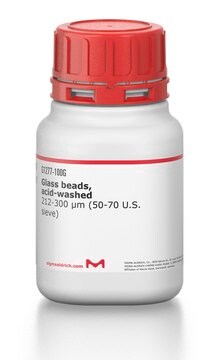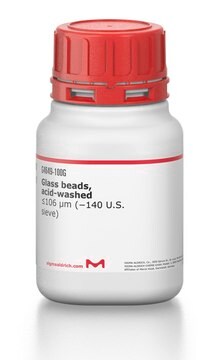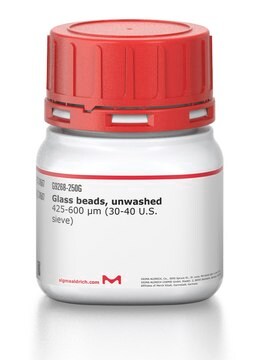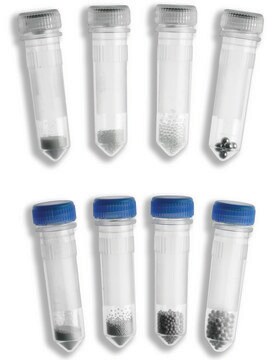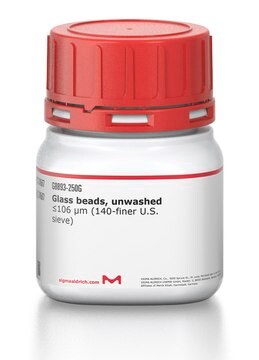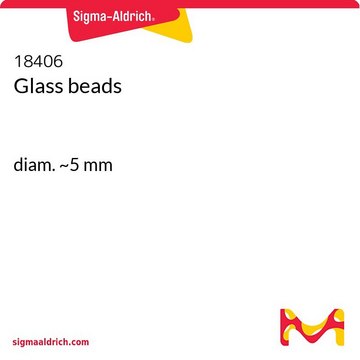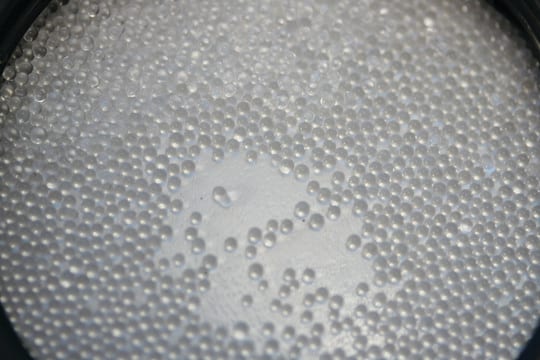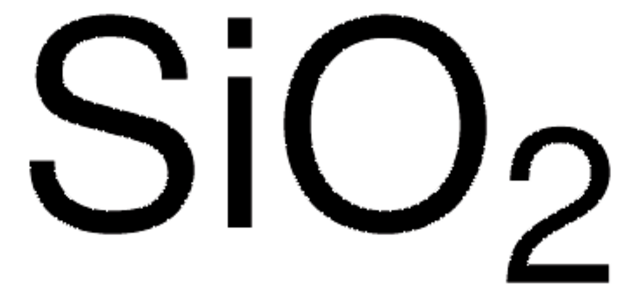G1152
Glass beads, acid-washed
710-1,180 μm (16-25 U.S. sieve)
Sinonimo/i:
Glass Beads
Autenticatiper visualizzare i prezzi riservati alla tua organizzazione & contrattuali
About This Item
Codice UNSPSC:
41102422
NACRES:
NB.22
Prodotti consigliati
Dimensione particelle
710-1,180 μm (16-25 U.S. sieve)
Applicazioni
Acid-washed glass beads have been used:
- in the extraction of proteins from antigen-expressing transgenic lines of Nicotiana tabacum L.
- to extract DNA of Candida albicans from human and murine blood samples
- to measure lipid yield from microalga C.homosphaera by adopting different methods of cell disruption methods
Codice della classe di stoccaggio
11 - Combustible Solids
Classe di pericolosità dell'acqua (WGK)
nwg
Punto d’infiammabilità (°F)
Not applicable
Punto d’infiammabilità (°C)
Not applicable
Dispositivi di protezione individuale
Eyeshields, Gloves, type N95 (US)
Scegli una delle versioni più recenti:
Possiedi già questo prodotto?
I documenti relativi ai prodotti acquistati recentemente sono disponibili nell’Archivio dei documenti.
I clienti hanno visto anche
Novel strategy for microalgae cell disruption and wet lipid extraction by employing electro-Fenton process with sacrificial steel anode
Wanniarachchige P, et al.
Bioresource Technology (2022)
Continued expression of plant-made vaccines following long-term cryopreservation of antigen-expressing tobacco cell cultures
Van E J and Keen P.
In Vitro Cellular & Developmental Biology. Plant, 45(6), 750-757 (2009)
Katarina Damjanovic et al.
Microbial ecology, 79(3), 706-719 (2019-08-23)
Coral-associated bacteria are critical for the well-being of their host and may play essential roles during ontogeny, as suggested by the vertical transmission of some bacteria in brooding corals. Bacterial acquisition patterns in broadcast spawners remain uncertain, as 16S rRNA
Sarah L Sokol et al.
eLife, 7 (2018-05-23)
Most eukaryotic parasites are obligately heteroxenous, requiring sequential infection of different host species in order to survive. Toxoplasma gondii is a rare exception to this rule, having a uniquely facultative heteroxenous life cycle. To understand the origins of this phenomenon
Déborah Tribouillard-Tanvier et al.
PloS one, 3(5), e2174-e2174 (2008-05-15)
6-Aminophenanthridine (6AP) and Guanabenz (GA, a drug currently in use for the treatment of hypertension) were isolated as antiprion drugs using a yeast-based assay. These structurally unrelated molecules are also active against mammalian prion in several cell-based assays and in
Il team dei nostri ricercatori vanta grande esperienza in tutte le aree della ricerca quali Life Science, scienza dei materiali, sintesi chimica, cromatografia, discipline analitiche, ecc..
Contatta l'Assistenza Tecnica.